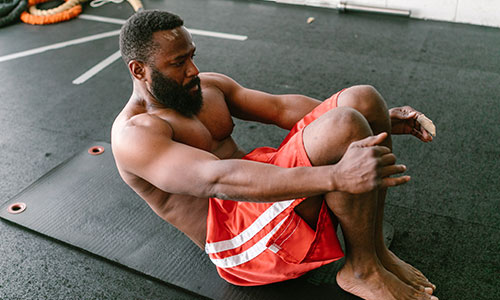Finding Your Rhythm: The Key to Running Success Through Heart Rate Monitoring
As a runner, you’re likely acquainted with high-intensity interval training, also famously known as (HIIT). It's a type of workout that alternates between short bursts of intense exercise and periods of rest or lower-intensity exercise.
Since I started using my Whoop, I’ve noticed that it can take up to a full day to recover from a single high-intensity workout! An important part of my HIIT sessions, especially when running, is monitoring my heart rate. Paying attention to your heart rate ensures you’re pushing yourself hard enough during the intense intervals while still allowing adequate recovery during the rest periods.
With technology taking over, heart rate monitors are now hugely popular among runners across all skill levels. Heart rate monitoring provides valuable insights into your cardiovascular fitness and overall health.

Understanding Heart Rate Zone
Heart rate zones, delineated by specific BPM ranges, denote various exercise intensities. These zones, determined by a percentage of one's maximum heart rate, guide workout intensity. For instance, Zone 1 denotes light activity, Zone 2 moderate, and Zone 3 vigorous. Training within these zones allows precise targeting of fitness goals, like endurance enhancement or fat burning.
VO2 Max as Fitness Measurement
Understanding VO2 max in running is crucial, indicating how effectively your body uses oxygen during intense exercise. A higher VO2 max signifies better endurance, allowing you to sustain faster speeds for longer. Achieving this requires targeted training like intervals and sustained tempo runs, stimulating cardiovascular adaptations that enhance oxygen utilisation.
Why Is It Important to Know Your Heart Rate While Working Out?
Did you know increased heart rates can strain your cardiovascular system, causing elevated blood pressure and hindering workout sustainability? Monitoring heart rate during running serves as an early warning for overexertion and irregular rhythms, enabling adjustments for safe, effective workouts, and safeguarding cardiovascular health in the long term.
Precision Training: Heart rate monitors offer precise insights into exercise intensity levels by providing real-time feedback on heart rate zones. This allows individuals to adjust their workout intensity accordingly, ensuring they stay within their target heart rate zones for optimal calorie burn, endurance development, or aerobic conditioning.
Data-Driven Progress Tracking: Heart rate monitors provide valuable data for tracking fitness progress over time. By consistently monitoring heart rate during workouts and analysing trends, you can assess your cardiovascular fitness levels, set realistic goals, and track improvements.
Heart Rate and Exertion
Monitoring heart rate is essential for evaluating fitness and stamina, particularly with tools like Whoop offering personalised strain calculations. Heart rate serves as a reliable gauge of exercise intensity, recovery status, and overall fitness development.
A higher heart rate increases metabolic demand and oxygen intake, straining cardiovascular, respiratory, and muscular systems. Managing intensity prevents fatigue and overtraining.

Finding Your Ideal Heart Rate for Exercise
Heart rate during exercise reflects effort level, fluctuating with activity intensity. Monitoring it offers insight into our workout intensity.
- Calculate Maximum Heart Rate (MHR): Use the formula 220 minus your age to estimate your Maximum Heart Rate (MHR). For instance, if you're 40 years old, your MHR would be approximately 180 beats per minute (BPM).
- Determine Target Heart Rate Zones: Once you have your MHR, calculate target heart rate zones based on your fitness goals. This helps ensure you're exercising at an appropriate intensity level to achieve your desired fitness outcomes.
Conclusion
Monitoring heart rate during running, especially in high-intensity interval training (HIIT), is crucial for achieving fitness goals effectively and safely. By using heart rate data, you can customise workouts, optimise intensity, and track progress over time, enhancing both effectiveness and safety, allowing you to experience continuous improvement and sustain your fitness.
-
 Under Armour Womens Tech SSV Short Sleeve V Neck T Shirt£26.20RRP £27.00 Save Up To £0.80
Under Armour Womens Tech SSV Short Sleeve V Neck T Shirt£26.20RRP £27.00 Save Up To £0.80
Categories
- Sport (28)
- Product Reviews (3)
- Team Outdoor Look (7)
- Mike Wild (2)
- Mike Payton (2)
- Suse Hammond-Pears (3)
- Snowboarding (12)
- Latest Offers (105)
- Shop Talk (1)
- Competitions (7)
- Walking (413)
- Lifestyle Fashion (8)
- Travel (86)
- Kit Guides (176)
- Workwear Clothing (6)
- Safety Workwear (4)
- Health/Fitness (289)
- Skiing (91)
- Great Outdoors (1316)
- Cycling (92)
- January 2025
- December 2024
- November 2024
- October 2024
- September 2024
- August 2024
- July 2024
- June 2024
- May 2024
- April 2024
- March 2024
- February 2024
- January 2024
- December 2023
- November 2023
- October 2023
- September 2023
- August 2023
- July 2023
- June 2023
- May 2023
- April 2023
- March 2023
- February 2023
- January 2023
- December 2022
- November 2022
- October 2022
- September 2022
- August 2022
- July 2022
- June 2022
- May 2022
- April 2022
- March 2022
- February 2022
- January 2022
- December 2021
- November 2021
- October 2021
- September 2021
- August 2021
- July 2021
- June 2021
- May 2021
- April 2021
- March 2021
- February 2021
- January 2021
- December 2020
- November 2020
- October 2020
- September 2020
- August 2020
- July 2020
- June 2020
- May 2020
- April 2020
- March 2020
- February 2020
- January 2020
- December 2019
- November 2019
- October 2019
- September 2019
- August 2019
- July 2019
- June 2019
- May 2019
- April 2019
- March 2019
- February 2019
- January 2019
- December 2018
- November 2018
- October 2018
- September 2018
- August 2018
- July 2018
- June 2018
- May 2018
- April 2018
- March 2018
- February 2018
- January 2018
- December 2017
- November 2017
- October 2017
- September 2017
- August 2017
- July 2017
- June 2017
- May 2017
- April 2017
- March 2017
- February 2017
- January 2017
- December 2016
- November 2016
- October 2016
- September 2016
- August 2016
- July 2016
- June 2016
- May 2016
- April 2016
- March 2016
- February 2016
- January 2016
- December 2015
- November 2015
- October 2015
- September 2015
- August 2015
- July 2015
- June 2015
- May 2015
- April 2015
- March 2015
- February 2015
- January 2015
- December 2014
- November 2014
- October 2014
- September 2014
- August 2014
- July 2014
- June 2014
- May 2014
- April 2014
- March 2014
- February 2014
- January 2014
- December 2013
- November 2013
- October 2013
- September 2013
- August 2013
- July 2013
- June 2013
- May 2013
- April 2013
- March 2013
- February 2013
- January 2013
- December 2012
- November 2012
- October 2012
- September 2012
- August 2012
- July 2012
- June 2012
- May 2012
- April 2012
- March 2012
- February 2012
- January 2012
- December 2011
- November 2011
- October 2011
- September 2011
- August 2011
- May 2010
- April 2010
- March 2010
- February 2010
- January 2010
- November 2009
- October 2009
- September 2009


Submit a Comment